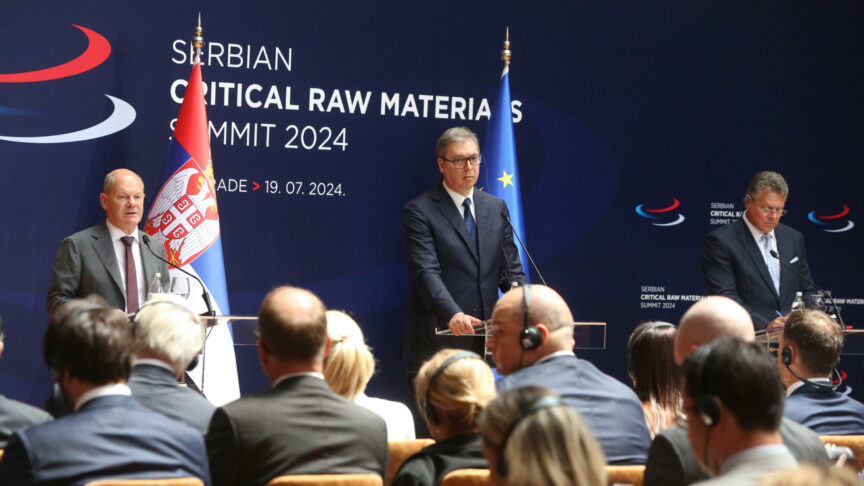Syria strikes: in search of a strategy
It remains hard to see how this US administration will produce a wider strategy for Syria that both allows for meaningful impact and limits escalation.
Last week’s chemical weapons attack has again thrust the brutality of the Syrian conflict onto the global spotlight. Assad’s use of lower-level chemical weapons has never stopped, but the haunting visual evidence of last Saturday’s attack has forced people to take note once again. Western military action against the Assad regime looks likely. US President Trump has broadcast as much on Twitter. French President Emmanuel Macron, who has repeatedly cited chemical weapons use as a red line, and the UK also seem poised to join the mission.
Renewed attention on the conflict is welcome, but the risk as ever is that a sudden burst of action will do little to improve the desperate situation on the ground for Syrian civilians. Military strikes may momentarily affect Assad’s calculations and lessen the likelihood of immediate new gas attacks. But the likelihood remains that a burst of rapid-fire Western action will quickly fade into the background as disengagement and the status quo ante reasserts itself.
Worse, western strikes could be a prelude to a yet wider escalation. The intra-Syrian struggle for power is rapidly morphing into an increasingly direct and dangerous inter-state confrontation. Not only do the US and Russia find themselves in opposing camps, but regional players likely see US-led strikes as opportune cover for an effort to weaken Iran’s influence in Syria.
The Limits of Calibration
The history of the seven-year conflict has already offered two failed case studies of how to address Syrian chemical weapons use. In 2013 President Obama, following the deadly sarin attack on Eastern Ghouta, negotiated the handing over of Syria’s chemical weapons stockpiles. This agreement did not include chlorine, which the regime has continued use with alarming frequency. Indications suggest that the regime either did not fully comply with the agreement or has since reactivated its wider programme.
In April 2017, President Trump responded to a new sarin attack on the town of Khan Sheikoun with a one-off attack on a Syrian air base. But just one year later, nothing seems to have changed.
Despite the failure of his previous attempt to deter Assad, President Trump appears to be again embracing the need for military strikes. Complete deadlock in the UNSC and far greater US-Russian tension than in 2013 leave less room than ever for any form of deal-making.
Reports suggest that the Trump administration is preparing to attack a wider set of targets and to wage a more intense bombing campaign than last year. Presidents Trump and Macron in particular want to impose a higher cost on Assad. But they do not want to be dragged into a deeper and more sustained intervention. Imposing a sufficient cost on Assad that successfully calibrates this balance will be incredibly difficult. Assad and his allies understand their dilemma and are already hunkering down. They clearly believe they can ride out the coming attack even if it is more intense than last year’s strikes. If past is prologue it won’t take long before Assad once again begins testing Western limits..
Threats of Escalation
The US and its allies face the additional challenge of trying to avoid a wider escalation with Russia. Various Russian officials have sent out clear messages that Russia will respond to any US-led strikes with force of its own. Some reports do indicate that the US is now talking to Moscow about deconfliction mechanisms and it seems unlikely that Russia really wants to initiate a broader conflict.
But Russians troops in Syria risk being caught up in the attacks regardless. The inherent unpredictability of war – and of the US and Russian leaders – makes for a risky situation. Any attacks also guarantee a further poisoning of the relationship with Russia, whose participation is ultimately still critical to any hope of resolving the core conflict. This should remain the over-riding priority.
Western strikes also risk playing into a regional war that is centred on Iran. Recent months have seen increased Israeli attacks on Iranian assets in Syria, including one earlier this week. Jerusalem wants the US to take a more forceful stand. Just last week Israeli Prime minister Benjamin Netanyahu expressed discontent with President Trump’s publicly stated desire to pull out of Syria completely. Israel, Saudi Arabia, and even elements within the US government are likely to try and use this situation to push Trump to assume a more forceful position against Iran on the ground in Syria. Just as any strikes that hit Russians could provoke escalation, an attack on Iranian forces could also widen the war.
Don’t Just Tweet
The delayed response (five days and counting) to the chemical attack may point to some acknowledgment of these dilemmas. But it remains hard to see how this US administration will produce a wider strategy for Syria that both allows for meaningful impact and limits escalation. To date, it has shown no willingness to even try to forge a wider political strategy to complement strikes. Europe’s role in the attack is likely to mostly be symbolic. Europeans leaders can nonetheless press the case that kinetic action must be complemented by a broader strategy. Any leverage accrued by the strikes should be immediately channelled towards that end rather than wasted on twitter gloating.
The European Council on Foreign Relations does not take collective positions. ECFR publications only represent the views of their individual authors.


